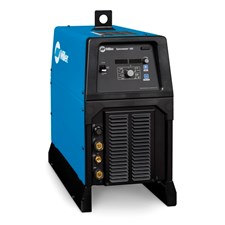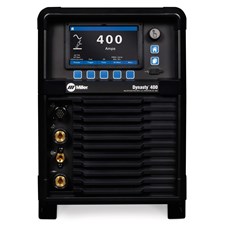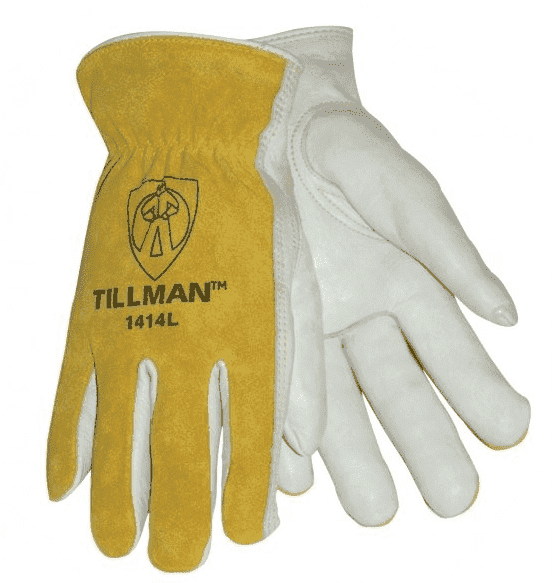56 AC/DC TIG Welders Starting at $1,529.99
Aluminum TIG Welders & Multi-Process Machines
Shop 60+ AC/DC TIG welding machines priced from $1,049.00 to $47,771.60 and enjoy free shipping to the contiguous U.S. on all orders over $300.
 Miller Electric
Miller Syncrowave® 212 AC/DC TIG Welder, Air Cooled Package - 907911
2 purchased
Miller Electric
Miller Syncrowave® 212 AC/DC TIG Welder, Air Cooled Package - 907911
2 purchased
 Miller Electric
Miller Syncrowave® 212 AC/DC TIG Welder, Water Cooled Package - 951000201
Miller Electric
Miller Syncrowave® 212 AC/DC TIG Welder, Water Cooled Package - 951000201
 Lincoln Welding Machines
Lincoln Electric Power MIG 220 AC/DC Multi-Process Welder (K5379-1)
Lincoln Welding Machines
Lincoln Electric Power MIG 220 AC/DC Multi-Process Welder (K5379-1)
 Miller Welders
Miller Multimatic 220 AC/DC Multi-Process Welder - 907757
Miller Welders
Miller Multimatic 220 AC/DC Multi-Process Welder - 907757
 Miller Welders
Miller Multimatic 220 AC/DC Multi-Process Welder – Cart & Wireless Foot Pedal, 951000104
29 purchased
Miller Welders
Miller Multimatic 220 AC/DC Multi-Process Welder – Cart & Wireless Foot Pedal, 951000104
29 purchased
 Miller Welders
Miller Multimatic® 220 AC/DC Multi-Process Welder w/ Wireless Foot Pedal #907757002
24 purchased
Miller Welders
Miller Multimatic® 220 AC/DC Multi-Process Welder w/ Wireless Foot Pedal #907757002
24 purchased

 Lincoln Welding Machines
Power Wave® 300C Industrial Multi-Process Welder (200-575V 1/3PH) #K4487-1
Lincoln Welding Machines
Power Wave® 300C Industrial Multi-Process Welder (200-575V 1/3PH) #K4487-1
 Lincoln Welding Machines
Power Wave® 300C Advanced Multi-Process Welder (200-575V 1/3PH) #K4488-1
Lincoln Welding Machines
Power Wave® 300C Advanced Multi-Process Welder (200-575V 1/3PH) #K4488-1
 Lincoln Ready-Paks & One-Paks
Power Wave® 300C Advanced Multi-Process Welder, Educational One-Pak® (200-575V 1/3PH) #K4934-1
Lincoln Ready-Paks & One-Paks
Power Wave® 300C Advanced Multi-Process Welder, Educational One-Pak® (200-575V 1/3PH) #K4934-1
 Miller Welders
Dynasty® 300 Multiprocess Welder, Wireless Foot Control Complete Package (208-600V) #951000100
Miller Welders
Dynasty® 300 Multiprocess Welder, Wireless Foot Control Complete Package (208-600V) #951000100

 Miller Welders
Dynasty® 210 TIG Welder w/ Wireless Foot Control, Complete Pkg (120-480 V) #951936
Miller Welders
Dynasty® 210 TIG Welder w/ Wireless Foot Control, Complete Pkg (120-480 V) #951936




AC/DC TIG & Multi-Process Welding Machines
AC/DC TIG welders offer versatility for welding diverse metals, with seamless switching between AC for aluminum and DC for steel, brass, and copper. They provide advanced control options for customized precision, even on thin materials, reducing rework and waste. Portable and durable, these welders are suitable for on-site repairs and daily use, catering to every welder's style.
What Does AC/DC TIG Mean?
AC/DC TIG welding combines the benefits of both alternating and direct current modes, making it ideal for different types of metals and applications.
-
AC (Alternating Current): AC welding is often used for welding aluminum and magnesium. Aluminum has a thin oxide layer that resists welding; the alternating current “scrubs” this oxide layer while providing a smooth, stable arc. This makes AC ideal for welding softer metals with high thermal conductivity.
-
DC (Direct Current): DC welding is primarily used for steel, stainless steel, copper, and titanium. In DC mode, the current flows in a single direction, providing a focused and stable arc. This mode is preferred for harder metals, as it allows for deeper penetration and stronger welds.
What Can You Weld with an AC/DC TIG Welder?
1. Aluminum and Magnesium (using AC mode)
- Why AC? Aluminum and magnesium have a natural oxide layer that resists welding. AC (Alternating Current) mode provides a cleaning action that breaks down this oxide layer, allowing for a strong, clean weld.
- Applications: AC mode is ideal for welding aluminum parts in automotive, aerospace, and marine applications where corrosion resistance and lightweight properties are essential.
2. Steel and Stainless Steel (using DC mode)
- Why DC? DC (Direct Current) mode creates a stable arc with deep penetration, making it perfect for metals like steel and stainless steel. DC mode is also more forgiving with heat, which prevents warping and creates stronger welds.
- Applications: DC TIG welding is widely used in structural welding, fabrication, and repair of equipment, as well as in kitchen and food-grade applications requiring stainless steel.
3. Copper and Brass (using DC mode)
- Why DC? Copper and brass conduct heat quickly, which can be challenging. DC welding provides the necessary stability and control for precise welds.
- Applications: DC mode is commonly used for plumbing, electrical components, and sculpture work involving copper or brass.
4. Titanium (using DC mode)
- Why DC? Titanium requires precise control to avoid contamination, and DC TIG offers a stable arc that minimizes the risk of impurities.
- Applications: Titanium welding is important in aerospace, medical devices, and high-performance automotive applications due to titanium’s high strength-to-weight ratio and corrosion resistance.
5. Nickel Alloys (using DC mode)
- Why DC? Nickel alloys are challenging to weld due to high melting points and oxidation tendencies. DC mode provides consistent arc control.
- Applications: Used in chemical processing, oil and gas, and power generation, DC mode is essential for these high-performance and corrosion-resistant applications.
Benefits of an AC/DC TIG Welding Machine
- Versatility: AC/DC TIG welders allow you to work on a broader range of metals, accommodating both aluminum and ferrous metals like steel.
- Precision and Control: TIG welding is already known for its high-precision capabilities. AC/DC options enhance control, especially on complex jobs where different materials and thicknesses are involved.
- Cleaner Welds: AC welding mode helps remove impurities like the oxide layer on aluminum, resulting in cleaner welds.
- Better Penetration: DC mode provides deeper penetration on thicker metals, making it ideal for more robust, structural projects.
Is AC or DC Better for TIG Welding?
The choice between AC and DC TIG welding depends on the material and desired weld quality:
AC (Alternating Current) TIG Welding
- Best for Aluminum and Magnesium: AC mode removes oxide layers on these metals, allowing for cleaner welds.
- Softer Arc: Ideal for thin metals, producing smooth, aesthetic welds with less post-weld cleanup.
- Applications: Preferred for aluminum and magnesium welding.
DC (Direct Current) TIG Welding
- Best for Steel, Stainless Steel, Copper, Titanium, and Nickel Alloys: DC provides a focused, stable arc with deep penetration, ideal for tougher metals.
- Strong, Precise Welds: Allows more control and stronger welds, especially on structural projects.
- Applications: Suited for steel, stainless steel, and other hard metals.
Which Is Better?
- AC is better for aluminum and magnesium.
- DC is better for steel, copper, titanium, and other hard metals.
For maximum versatility, an AC/DC TIG welder is ideal, allowing you to switch between modes based on your project needs.























